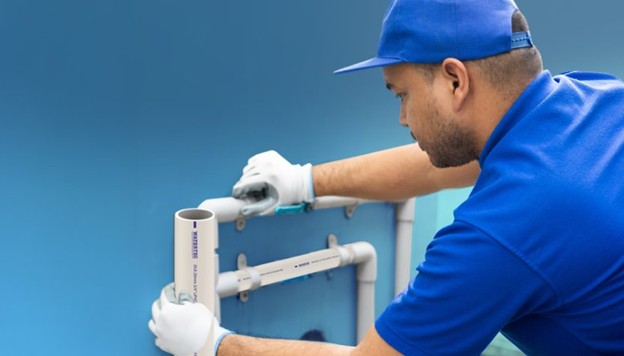
February 12, 2025
Plumbing is one of the most vital home maintenance process that
tends to go unnoticed until something breaks down. Plumbing errors can result
in expensive repairs and a lot of inconvenience. Familiarity about common
mistakes that come with plumbing pipe installations and maintenance can be a
lifesaver for homeowners in terms of saving time and money. Below is an
explanation of common plumbing mistakes and advice on how to avoid them.
1.
Selecting the Wrong Pipe Type
One of the most important plumbing decisions is choosing the
proper type of plumbing pipe. Installing the incorrect type of pipe, like a
plumber PVC pipe when a metal pipe would be needed, will result in
inefficiencies and hazards. For instance, PVC pipes are ideal for drain lines
and cold water supply because they resist corrosion and are inexpensive. But
they are not ideal for hot water lines since PVC melts when exposed to high
temperatures. Always seek advice from a professional to make sure that the proper
type of pipe is installed in the proper application.
2.
Disregard of Local Codes and Regulations
Each area has its own set of codes and regulations for
plumbing installations. The codes are made to provide safety and efficiency in
plumbing systems. Disregarding these codes may lead to inspection failures,
penalties, or redoing the plumbing installation. It's important to know the
local plumbing codes and, if unsure, just consult a licensed plumber to do the
installation.
3.
Improper Pipe Sizing
Employing pipes that are undersized may cause water pressure
and slow drainage, while oversized pipes might cause water and energy wastage.
Proper pipe sizing is important to allow efficient flow of water and system
pressure. It means knowing your home's water usage demands and seeing to it
that the diameter of the plumber PVC pipe or any other pipe employed is in
accordance with these demands.
4.
Over-tightening Connections
This may sound like a good practice to avoid leaks,
but it may actually damage the pipes, particularly if they are PVC or other
plastic pipes. Over-tightening may result in cracked fittings or broken seals,
which can cause leaks that need to be repaired again.
5.
Failing to Support Pipes
Plumbing pipes must be supported at regular intervals to
avoid sagging and breakage over time. Unsupported pipes may bend or sag under
the load of water they transport, especially at extreme temperatures. Make sure
your plumbing installations have proper support, employing straps at prescribed
intervals.
6.
Making Complex Repairs on Your Own Without Experience
While most home repairs can be done as a DIY project,
professional hands should be employed for complex plumbing problems. Modifying
main supply lines, major work with water heaters, and re-routing sewer pipes
are complicated and need an extensive understanding of plumbing systems. Doing
these without the necessary skills can result in more disastrous problems,
including catastrophic water damage.
Conclusion
Steering clear of the most common plumbing errors starts
with knowing the fundamentals of how your home's plumbing system functions and
knowing when a task is out of your hands as someone who likes to do things by
themselves. Placing the proper type and diameter of plumbing pipe, following
local regulations, and calling in professionals when the time comes are all
important steps in having an effective and problem-free plumbing system.